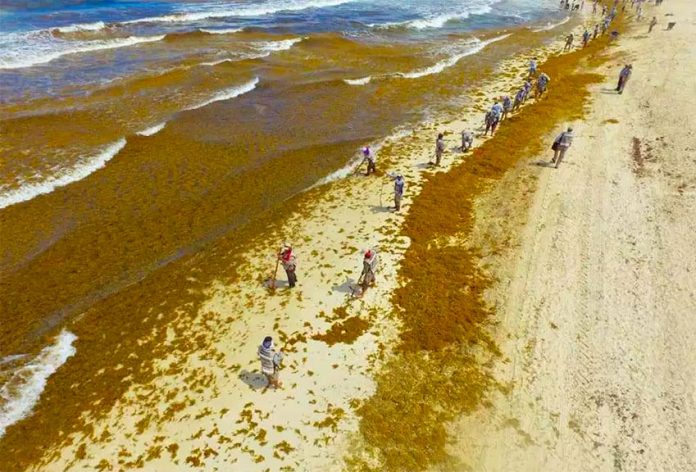The scourge that has mired much of the coast of Quintana Roo with smelly brown algae has now affected Playa Delfines, burying one of Cancún’s most popular beaches under 35 tonnes of sargassum in just one day.
Mayor Mara Lezama called Tuesday’s seaweed arrival “unprecedented” and said that more than 100 federal and municipal workers were involved in clean-up efforts to remove the weed. They are being supported by nearly an equal number of volunteers.
The two-kilometer stretch of beach that comprises Playa Delfines is visited by an average of 5,000 visitors every day during peak tourist periods.
Half of Cancún’s GDP is generated by tourism-related activities, according to the World Travel and Tourism Council.
Meanwhile, nearly 650,000 tonnes of sargassum has buried the Quintana Roo coastline between the start of the year and June 24, and shows no signs of relenting, with July and August projected to be the worst months.
Hotel occupancy in the Riviera Maya is reported to be 50%, down from the 80% or more that is typical of the summer season.
Source: Noticaribe (sp), Milenio (sp)
